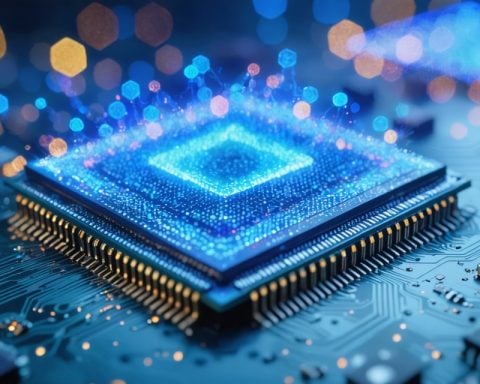As the gaming community eagerly anticipates the next leap in console technology, whispers about Sony’s PS5 Pro are resonating louder. With the current PlayStation 5 already offering impressive specs, the arrival of a Pro version promises to elevate the gaming experience even further. What does this mean for avid gamers and technology enthusiasts?
The potential power of the PS5 Pro lies in its rumored specifications that could redefine what consoles are capable of. Industry insiders suggest the PS5 Pro might feature a more potent GPU, bringing higher resolutions and frame rates to competitive games, potentially supporting 8K graphics. This move could push the visual fidelity of console gaming into territory previously reserved for high-end PCs.
Additionally, enhanced ray tracing capabilities are speculated to be a part of Sony’s plan, allowing game developers to create more immersive and realistic environments. This upgrade could influence game design, encouraging developers to explore new graphical dimensions and storytelling methods.
Improved cooling systems are likely to be part of the new design, addressing one of the primary concerns with the current PS5’s performance during intensive gaming sessions. With better thermal management, gamers might enjoy longer play sessions without experiencing any dips in performance.
Backward compatibility remains a priority for fans, and the PS5 Pro is expected to maintain or even expand on this feature, allowing for a smooth transition for existing PS5 owners.
As Sony potentially gears up to unveil the PS5 Pro, the anticipation builds for what could be a pivotal moment in the evolution of gaming consoles, promising an even more thrilling era of digital storytelling and immersion.
Sony’s PS5 Pro: Revolutionizing Gaming or Just a Gimmick?
Sony’s PS5 Pro is stirring excitement across the gaming community, but how does this new console iteration impact everyday players and the broader tech landscape? Beyond the technical enhancements, the PS5 Pro ignites debates about the pace of tech upgrades and sustainability.
The key question is, does every player truly benefit from these incremental upgrades? The enormous leap in graphical performance and potential 8K support appears more tailored to hardcore gamers and tech enthusiasts who demand the latest advances. Yet, for the casual gamer, the difference between 4K and 8K might be practically imperceptible, raising concerns about whether the added cost translates to a noticeably better experience.
There are also environmental impacts to consider. The increased frequency of console upgrades can contribute to e-waste if consumers are encouraged to replace hardware more often. How can companies like Sony balance innovation with sustainability? Would an upgrade program reducing waste be beneficial, or is it just shifting the problem?
On a positive note, improved technologies such as enhanced ray tracing and better cooling systems could encourage more immersive games development, fostering creativity and new gaming experiences. But the challenge remains: how accessible are these innovations to smaller developers who may lack the resources to fully exploit them?
As the excitement mounts for the potential unveiling of the PS5 Pro, without a doubt, it will influence gaming and industry standards. However, whether this will be a stride forward for all gamers or if the advantages will remain exclusive to a niche audience is yet to be seen.
For more information about gaming advancements and tech innovations, visit Sony.


















